Did you know that over 60% of off-road vehicle accidents could be prevented with better vehicle handling skills and preparation? Whether you're a weekend trail explorer or a dedicated off-road enthusiast, mastering off-road vehicle handling isn't just about power—it's about safety, confidence, and unlocking all terrains. Get ready to discover the fundamental and advanced tricks to transform how you drive, keep your adventures incident-free, and enjoy every mile beyond the pavement.
Did You Know? Surprising Off-Road Vehicle Handling Statistics That Will Change How You Drive
- While dirt road mishaps account for a significant portion of off-road incidents, studies show that proper vehicle handling reduces accident rates by up to 40% compared to drivers lacking technique. This proves that skill and preparation outweigh brute force or vehicle upgrades.
- Implementing expert off-road handling techniques, such as momentum management, tire deflation, and routine vehicle maintenance, can not only increase your success rate on tough terrain but also improve overall safety for both solo drivers and groups. These strategies often make the difference between a seamless adventure and a call for recovery assistance on isolated trails.
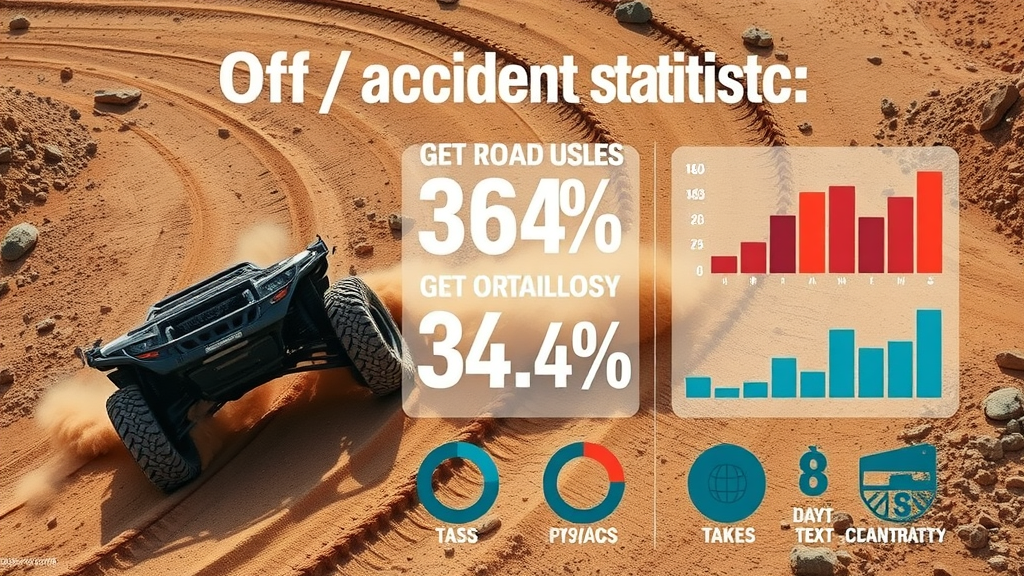
Achieving Optimal Off-Road Vehicle Handling: Fundamentals Every Driver Must Know
- Off-road vehicle handling refers to your ability to maintain control and stability over unpredictable terrain. Whether driving on dirt roads, rocky inclines, steep descents, or muddy trails, your approach to steering, throttle, and braking must adapt to changing surfaces. Unlike the consistent tarmac of road driving, off-road scenarios throw in a mix of traction challenges, obstacles, and sudden elevation changes.
- The differences between on-road and off-road driving are dramatic: On the street, tires and suspension are designed for grip and comfort. Off-road, the terrain tires, larger tires, and extended suspension travel are crucial for ground clearance and durability. Throttle response, braking control, and steering input become specialized skills, especially when navigating rough terrain where each wheel interacts with the ground differently.
- To master off-road vehicle handling, cultivate core skills like reading terrain, modulating throttle, and precise steering. Learning when to shift into low range, engage traction control or diff locks, and how to recover from sticky situations are essential. These abilities allow you to maintain traction and stability, even when your stock vehicle faces conditions it wasn’t originally built for.
Critical Vehicle Maintenance for Unmatched Off-Road Vehicle Handling
- Before any off-road adventure, routine vehicle maintenance is non-negotiable. Off-road driving puts extra stress on your wheel drive system, suspension travel, control arms, and engine. Check fluid levels, suspension, tires, and undercarriage for damage or loose components after every trip.
- Follow an essential maintenance checklist :
- Inspect and rotate tires; check terrain tires for sidewall damage.
- Test brakes for response and check brake fluid.
- Examine control arms and bushings for wear.
- Check transfer case and differential fluids.
- Ensure your tow strap, aid kit, and spare tire are accessible.
- Tire care is central to off-road vehicle handling . Rolling on low tread, overinflated, or damaged rubber limits traction and can strand you. Adjust tire pressure for terrain and inspect for embedded rocks after every excursion for optimal safety and longevity.
'Consistent vehicle maintenance is the key to safe, reliable off-road vehicle handling and long-term performance.' – Leading Off-Road Mechanic
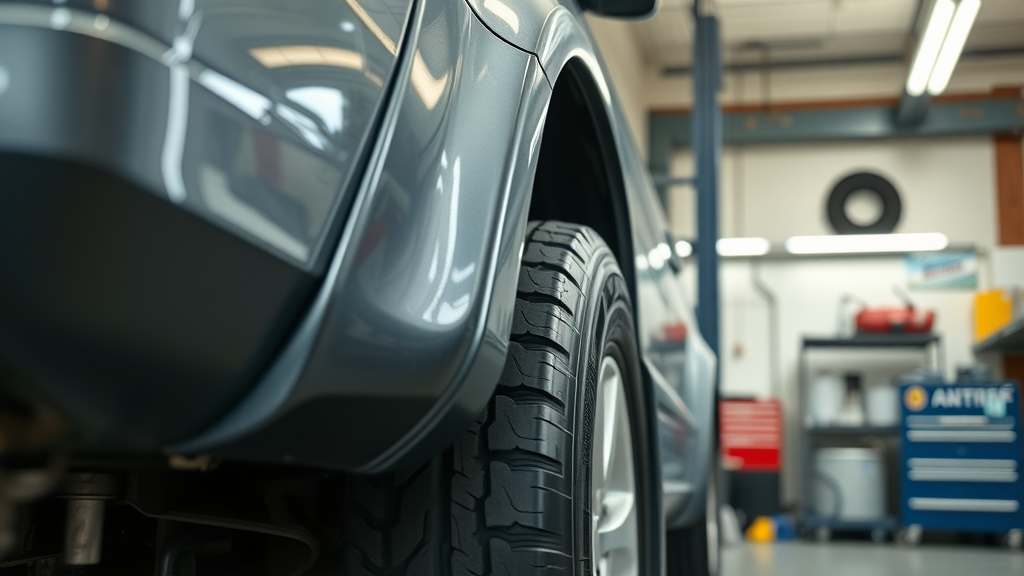
Maximizing Off-Road Vehicle Handling with Tire Deflators and Air Compressors
How Tire Deflators Improve Off-Road Vehicle Handling
- Adjusting tire pressure using a tire deflator customizes your grip for different terrains. Lowering tire pressure increases the tire footprint, allowing better traction on mud, sand, and rocky dirt roads. It also softens the ride, helping your suspension travel absorb more of the rough terrain. However, running too low risks popping a bead or damaging your wheels.
-
Step-by-step guide to using a tire deflator:
- Park your vehicle on level ground and let the tires cool.
- Remove the valve stem cap and attach the tire deflator.
- Set your target pressure based on the terrain (e.g., 15-18 psi for soft sand, 20-25 psi for rocky trails).
- Monitor pressure and detach the tool when the desired psi is reached.
- Repeat for each tire and save valve caps for reinflation.
- Risks of improper tire deflation: Deflating too much can lead to sidewall damage, reduced ground clearance, or a loose tire off the rim. Always know your tire’s safe minimum psi—especially with added weight or larger tires that change load characteristics. Periodic checks during the day prevent unwanted surprises.
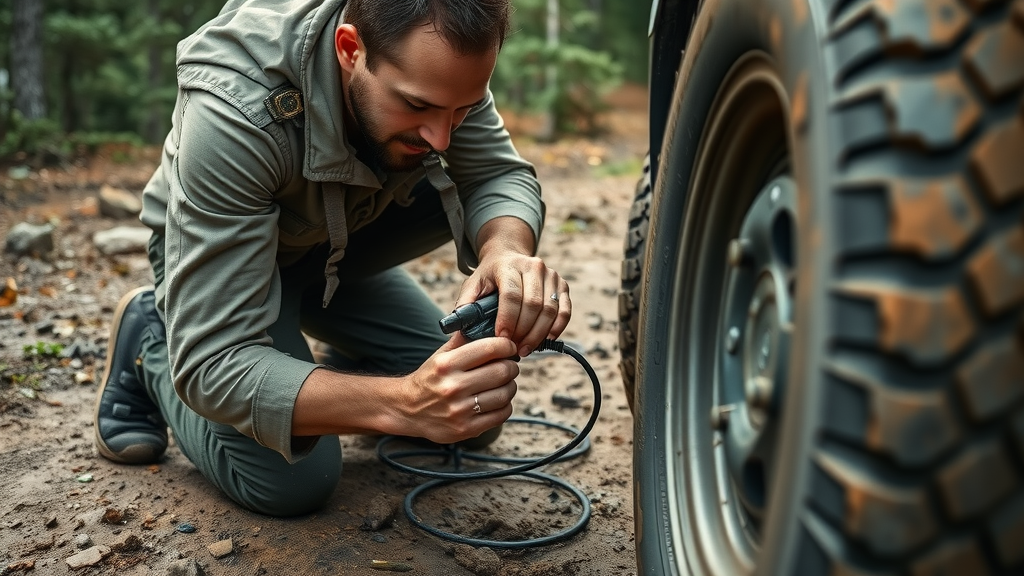
Using an Air Compressor for Quick Off-Road Recovery and Maintenance
- Choosing the right air compressor: Opt for a portable, heavy-duty compressor capable of inflating multiple terrain tires quickly. Look for models with automatic shutoff, long hoses, and compatibility with your specific vehicle. Compact options fit behind steel bumpers or in the trunk, making them perfect for road travel recovery.
- How to safely reinflate tires: Once back on the pavement, use the air compressor to return tire pressure to street levels (usually 30-35 psi for most drive vehicles). This step preserves tire life and restores proper handling for highway and road driving, where over-soft tires can cause excessive wear and reduced fuel efficiency.
| Tool | Primary Function | Benefits | Limitations |
|---|---|---|---|
| Tire Deflator | Lower tire pressure for traction; adapt to terrain | Boosts traction, softens ride, easy adjustment in the field | Risk of too-low PSI, slow for multi-tire setups, needs reinflation for road travel |
| Air Compressor | Reinflate tires for pavement; recover from punctures | Restores safe tire pressure, portable, essential recovery tool | Requires power, can be slow for large tires, bulkier options take up space |
Refining Off-Road Vehicle Handling: Advanced Techniques for Challenging Terrains
Navigating Mud, Sand, and Rocks with Superior Handling
- Effective throttle control, steering, and momentum set expert off-roaders apart. For mud and sand, gentle momentum helps you “float” over obstacles, while rocky trails require slow, steady throttle to avoid sudden wheel spin. Proper steering adjusts for changes in terrain—avoid abrupt wheel movements that quickly lose traction control.
- Engage low range and diff lock when necessary: low range gears in your transfer case maximize torque for ascents or tough terrain, while differential locks ensure both wheels on an axle receive equal power—vital where traction varies side-to-side. Save high range for firmer, more predictable dirt roads.
- For a visual demonstration, watch professional guides tackle steep climbs, deep mud, or rocky crawls using these skills. Notice their precise throttle, brake balance, and timely diff lock use—proof that real mastery goes beyond vehicle specs to skillful handling.
Road Driving vs. Off-Road Vehicle Handling: Essential Differences and Key Adjustments
- Transitioning from road driving to extreme terrain requires shifting both your mindset and your vehicle’s setup. On paved roads, focus is on traffic, lane discipline, and smoothness, while off-road, the priority becomes reading the land, adjusting speed for obstacles, and using all four wheels to maintain traction.
- Modifications that enhance off-road vehicle handling —such as larger tires, upgraded control arms, or adjustible suspension—help you clear obstacles without sacrificing road comfort. However, remember that excessive lift or aggressive terrain tires can negatively affect road driving manners, fuel economy, and tire wear. Find a balance based on your main driving environment.
'The best off-road drivers never stop adapting; each terrain poses unique challenges requiring specific skills.' – Professional 4x4 Trainer
Must-Have Equipment List for Reliable Off-Road Vehicle Handling
- Pack a comprehensive checklist on every trip:
- Tire deflator for pressure management
- Air compressor for reinflation and recovery
- Traction boards for muddy/soft terrain extraction
- Reliable tow strap for recovery assistance
- Aid kit and spare tire
- High-lift jack or recovery jack
- Sleeping bag, water, and basic food supplies for overnight safety
- Extra transfer case or diff fluid for emergencies
- Emerging innovations in handling gear include compact GPS units, digital tire deflators, and reinforced steel bumpers with built-in recovery winches. Stay updated as technology gives you more tools to safely push your off-road limits.
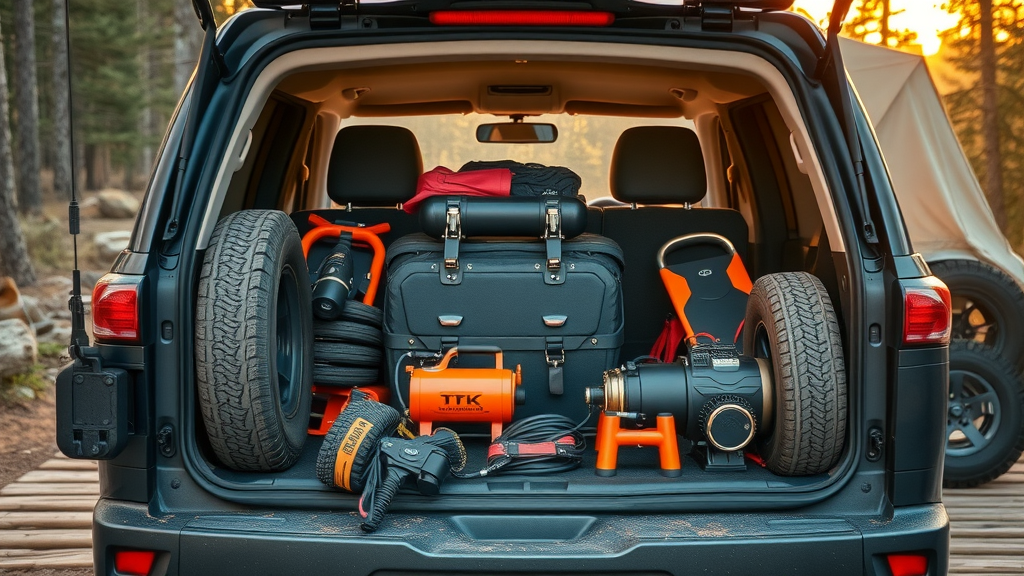
Expert Safety Practices: Preventing Mishaps While Focusing on Off-Road Vehicle Handling
- Master safe recovery procedures by planning routes with identified waypoints, using the right recovery equipment like tow straps, and never standing near taut straps during extractions. Maintain traction by clearing mud or rocks from under tires and reduce added weight before attempting tough sections.
- Consistent team communication and emergency planning are fundamental. Use two-way radios to coordinate moves, keep everyone in visual contact, and agree on meeting points or emergency contacts. Enlist a spotter when traversing tricky terrain—an extra set of eyes can prevent costly mistakes.
- For a step-by-step demonstration, review guide videos on vehicle recovery and off-road safety practices, covering risk minimization, signal handoffs, and the correct use of all stand-by equipment.
Mastering Off-Road Vehicle Handling: Rules of Off-Road Etiquette and Environmental Responsibility
- Respect trails and the environment: Never stray off marked routes, avoid sensitive areas, and pack out all waste. Many forest service roads and trails are protected for wildlife and plant preservation, and unsanctioned driving damages fragile ecosystems.
- Group conduct and off-road rules include yielding to uphill traffic, waiting your turn at obstacles, and communicating intentions. Always assist others in need and educate new drivers about ethics. Following these rules maintains access for everyone and builds a safer, more supportive community.
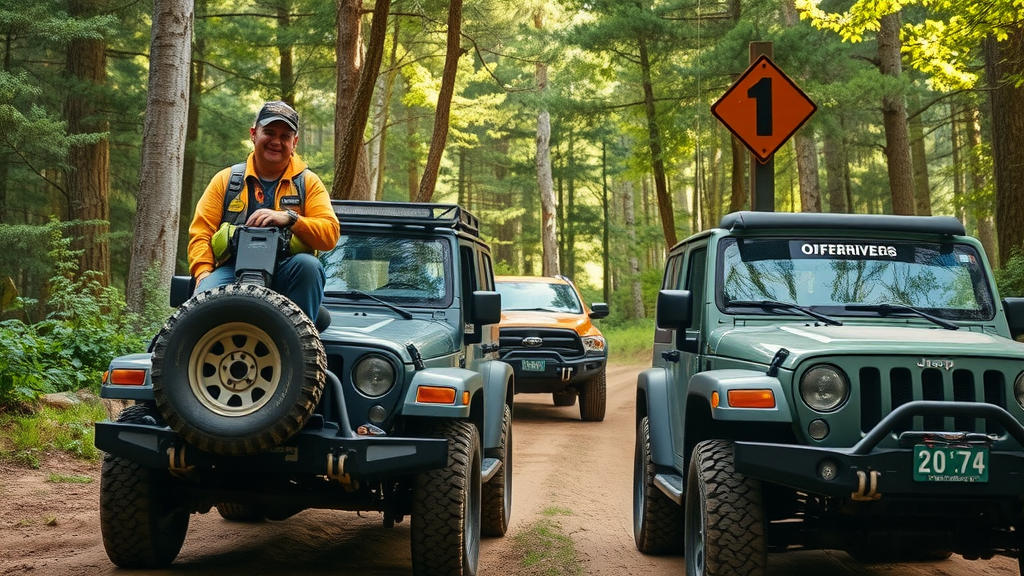
Common Off-Road Vehicle Handling Mistakes and How to Avoid Them
- The top driver errors include overconfidence on unfamiliar dirt roads, neglecting tire deflation, improper use of traction control or diff locks, and ignoring early warning signs of vehicle maintenance issues. A lack of planning often leads to running out of recovery equipment at the worst possible time.
- Ask for recovery assistance whenever you’re unsure. Recognize the limits of your vehicle and yourself: getting stuck is far less embarrassing than causing vehicle damage or injury. Shared knowledge and teamwork can get everyone back safely.
Frequently Asked Questions About Off-Road Vehicle Handling
What is a common mistake during off-road recovery?
- A typical mistake is misusing recovery straps —either attaching them to weak points (like a bumper or suspension) not designed to handle the force, or standing near a loaded tow strap, risking injury if it snaps. Always assess the terrain, use approved recovery points, and clear the area before pulling.
Do SUVs handle better off-road?
- SUVs often handle better off-road than cars, thanks to higher ground clearance, all-wheel drive systems, and terrain tires . However, dedicated trucks or specialized drive vehicles with solid axles and low range options will generally outperform standard SUVs in extreme environments. Choose the best platform for your typical terrain and needs.
What are the rules of off-road etiquette?
- Key etiquette includes yielding to uphill vehicles, staying on marked trails, never blocking paths, and cleaning up after yourself. Always signal your intentions, support less experienced drivers, and respect both the environment and other users to maintain trail access for all.
Why is off-roading illegal?
- Some areas ban off-roading to protect sensitive wildlife, prevent erosion, or ensure safety for all forest service users . Off-road driving is only allowed in designated locations, ensuring both environmental and personal safety. Always check local regulations before hitting the trail.
Key Takeaways: How to Consistently Improve Off-Road Vehicle Handling
- Practice expert vehicle handling skills, stay diligent with vehicle maintenance, equip essential recovery gear, and embrace continual learning. Mastering these habits means smoother trips, less downtime, and more fun on every outing.
- Regularly join community rides, follow new guides, and stay up to date on innovations in off-road equipment to further your off-road vehicle handling abilities and safety practices.
Ready to Transform Your Off-Road Vehicle Handling? Start Practicing These Pro Tips Today
- What are your best off-road vehicle handling tips? Share your stories, follow the latest expert guides, and stay active in off-road communities to keep improving and ensure every adventure is safe and unforgettable. The journey to mastery is ongoing — let’s hit the trail together!

Conclusion: Apply these off-road vehicle handling strategies, refine your skills, and embrace a proactive approach to safety and maintenance—mastery is an adventure worth every mile.
 Add Row
Add Row  Add
Add 




Write A Comment